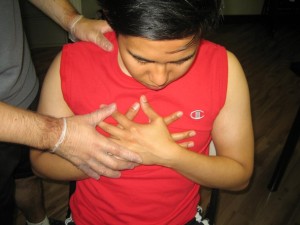Lung puncture occurs if the chest endured severe trauma such as a rib fracture of stab wound from a knife. These injuries allow air to abnormally buildup around the lungs.
Once this occurs, the lungs could not normally expand which leads to significant breathing difficulties. If an individual is suspected with a lung puncture or develop any symptoms, a doctor should be consulted to prevent any dangerous complications from arising.
Piercing chest pain
A lung puncture can cause sudden, piercing pain inside the chest near the site of the injury. The chest pain tends to occur on either side of the chest instead in the middle.
Generally, the pain is more intense when the individual tries to inhale normally. The manifestation of chest pain might be indications of other health conditions such as a heart attack. Due to this, immediate medical care is necessary.

Rapid heart rate
The reduced level of oxygen in the body caused by a lung puncture can affect the heart function. After sustaining the injury, the individual develops an increased heart rate. The elevated heart rate helps drive oxygenated blood throughout the body but can also cause the individual to feel dizzy or anxious.
Difficulty breathing
The air that accumulates around the lungs due to a lung puncture can disrupt with the capability of the lungs to normally expand. Once this occurs, the individual has difficulty breathing or shortness of breath as symptoms.
This difficulty in breathing prevents enough oxygen from reaching the essential organs in the body and lead to further symptoms such as dizziness or headache. In case the tissues, cells or organs inside the body could not receive enough oxygen due to a lung puncture, the individual is easily fatigued even after mild physical exertion.
Discolored skin
Poor oxygen can cause an individual with a lung puncture to end up with discolored skin. The skin appears unusually pale and bluish in appearance. In addition, the skin feels cool and can be accompanied by dizziness or loss of consciousness.
Quick Note / Disclaimer
The material posted on this page on a lung puncture is for learning and educational purposes only. To learn to recognize the indications and how it is managed, register for a first aid and CPR course with Mississauga First Aid.
